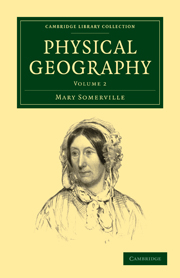Summary
Reptiles, more than any other class of animals, show the partial distribution of animated beings, because, being unable to travel to any great distance, they have remained in the places wherein they were originally stationed; and as they inhabit deserts, forests, and uncultivated ground, they have not been disturbed by man, who has only destroyed some individuals, but has not dimimished the number of species, which is probably the same as ever it was. Few of the mammalia hybernate, or fall into a torpid state in winter, except the bear, marmot, bats, and some others. Their fat supplies the carbon consumed by the oxygen during their feeble and imperceptible respiration, and is wasted by the time the warm weather returns, which rouses them from their lethargy, thin and extenuated. But reptiles, being colder blooded, bury themselves in the ground, and hybernate during the winter in cold and temperate climates. In hot countries, they fall into a state of torpor during the dry season, so that they have no occasion to wander either on account of temperature or want of sustenance; and the few that do migrate in quest of food, always return to their old haunts. As the blood of reptiles receives only a small part of the oxygen they inhale, little heat and strength are generated; consequently they are cold-blooded, and for the most part sluggish in their motions, which, however, are more varied than in quadrupeds; but as some reptiles, as tortoises and lizards, breathe more frequently than others, there are consequently great differences in their energy and sensibility.
- Type
- Chapter
- Information
- Physical Geography , pp. 168 - 183Publisher: Cambridge University PressPrint publication year: 2009First published in: 1848



